This is what I planned in the 4 full days I had in Istanbul, as they were grouped by area, I felt that I did a lot on day 1. It could possibly be split into 2 days to have a more relax day. I managed to follow most of what was planned except day 3 as it was raining pretty much the whole day. I stayed in Fatih area and I don't know how it ended up that I walked to most of the places even though I have an Istanbulkart except the ferry crossing to Kadikoy.
Here's an overview of the days.
Day 1: Sultanahmet & Around - Blue Mosque, Aya Sofya, Basilica Cistern, Hippodrome (Sultanahmet Square), Topkapi Palace, Arasta Bazaar
Day 2: Eminonu & Modern Center of Istanbul - Sulemaniye Mosque, Grand Bazaar, Spice Bazaar, Galata Bridge, Istiklal Street, Taksim Square
Day 3: Asian side of Istanbul - Ferry to Kadikoy, Camlica Park / Camlica Hill, Camlica Mosque, Uskudar
Day 4: Balat, Hammam
Day 1: Sultanahmet & Around
The Blue Mosque
Officially known as the Sultanahmet Camii (Sultanahmet Mosque) - with beautiful curvaceous exterior, six slender minarets and blue iznik tiles. Unfortunately it was under restoration work during my visit. It was still open to public despite under restoration but majority of the interior was blocked off or covered. Entrance is free and females needed to have their head covered. I carried a scarf in my luggage and forgot to bring a long when I left the hotel. Luckily I was in my hoodie and I was allowed entry with my hood up.
Hagia Sophia (Church of the Holy Wisdom) in 537 under the rule of Emperor Justinian. Converted to a mosque and renamed as Aya Softya under the Ottomans. In 1935 the mosque is converted into a museum by order of Mustafa Kemal Atatürk, president of the new Turkish Republic.
Entrance is free and there was a queue to enter the site. I was prepared to rent a scarf, but likewise, I was allowed in with my hood up. Thank goodness.
 |
| Constantine the Great (right) offering the Virgin Mary the city of Constantinople. Emperor Justinian (left) is offering her Hagia Sophia. |
Topkapi Palace
The Topkapı Palace or Topkapı Sarayı in Turkish or the Seraglio, is a large museum in the east of the Fatih district of Istanbul in Turkey. From the 1460s to the completion of Dolmabahçe Palace in 1856, it served as the administrative center of the Ottoman Empire, and was the main residence of its sultans.
I got a ticket that includes the Harem Apartments, TL420. I noticed that the ticket also include entrance to Hagia Irene monument so I went there after I left Topkapi Palace. Overall I spent about 2-3 hours there.
Aya Irini
Hagia Irene or Hagia Eirene, also sometimes known also as Saint Irene, is an Eastern Orthodox church located in the outer courtyard of Topkapı Palace in Istanbul. It is the oldest known church in Istanbul and the only Byzantine church in Istanbul that has not been converted into a mosque. It used as an arsenal for storing weapons until the 19th century. Today, it operates as a museum.
The Hippodrome at Sultanahmet Square
Sultanahmet Park was the Byzantine emperors venue choice of chariot races. In its heyday, it was decoarated by obelisks and statues, some of which remained in place today. There are descriptions dotted the park to provide further information. I can't find 5, 6 and 7 are missing because I can't find two of them, and one was covered off partly making it difficult to be photographed.
1. German fountain
2. Obelisk of Theodosius
3. Constantine Obelisk
4. Serpent Column
5. Commerce School
6. Ruins of the Great Empire Palace
7. Sphendon Wall
Basilica Cistern
The Basilica Cistern was constructed by Eastern Roman Emperor Justinianus in 542 A.D. to provide water requirement of the Great Palace. Basilica Cistern is a huge building and covers 9800 m2. There are 336 columns and at 9 metres high. The columns were erected at 12 lines and there are 28 at each line. Under 2 columns at the northwestern edge are 2 medusa heads. These 2 heads which are used as a block are sculpters from Roman Age. Today, Basilica Cistern is a museum and hosts various national and international events.
There was a queue to the ticketing counter or one could get the tickets online as the line to enter was a little shorter. I tried to get a ticket online but wasn't successful so I joined the queue to the ticketing counter. The queue moved quite swiftly actually. I paid TL190 for the ticket at the time of visit.
Arasta Bazaar
As I was staying around the area, I walked passed Arasta Bazaar fairly often. I walked passed but didn't buy anything.
Day 2: Eminonu & Modern Center of Istanbul
Sulemaniye Mosque
A memorial to Süleyman the Magnificent, Süleymaniye Mosque built above the Golden Horn, was the fourth imperial mosque built in Istanbul, has four minarets with 10 balconies. The ground looks out to a great city view.
Grand Bazaar
Grand, chaotic bazaar was build in 1461 but definitely needs haggling skills to buy things. I got some little bowls and glasses as a birthday present for a friend, and some magnets. Despite my haggling effort, I later found a similar looking magnets from a shop in Galata area selling for a cheaper price point. This is also where I learned lokum (Turkish delight) can be so expensive but the ones I used to see are probably the cheapest range of lokum.
Spice Bazaar / Egyptian Bazaar
Grand Bazaar feels more touristy compared to Spice Bazaar but there were a lot of more people in Spice Bazaar. I didn't have any intention to get any spices so I just walked through the bazaar to the other side.
Galata Bridge
This 1992 built bridge connects Eminonu to Galata. I spend a fair bit of time looking at the water view against beautiful Istanbul, then walked across to Galata. There were some construction going on and access to certain roads were blocked. It took me a while to find the start to the bridge. I almost wanted to follow some random locals that I observed going on some staircase. Fortunately before I went up the staircase, I noticed that all the locals were men. I later realised that the many staircases leads to a mosque. Phew.
See those restaurants at the bridge? That's where you can get fish sandwich.
Galata Tower
This 60m high cylindrical tower constructed in 1348 was the tallest structure in the city for centuries. It dominates the skyline north of the Golden Horn. I didn't feel like going up the tower during my visit so I just walked there, took some photos and continued my walk.
Istiklal Caddesi / Taksim Meydani
Istiklal Caddesi was once known as the Grand Rue de Pera is Beyoglu's premier boulevard. At the boulevard's nothern end is busy Taksim Meydani. Maybe because this was an avenue so less spread out compared to the Sultanahmet Square, I felt it was very crowded. I was there on a Friday and wonder how on earth nobody seems to need to work.
Day 3: Asian side of Istanbul
It was a very rainy day on the day I went to Kadikoy. The rain stopped on/off but went on for the whole day. On the returned journey, one of the passengers tried to tell me to look at a dolphin, which I missed. I can't remember how much was the ferry fare but can be paid using Istanbulkart.
I walked to Emimonu for the ferry to Kadikoy.
In my itinerary plan - I note down to go to Camlica Park / Camlica Hill, Camlica Mosque, Uskudar. What I did was walking around the Kadikoy Market, wandered the Yeldeğirmeni neighbourhood, visited the Kadikoy Bull Statue, had lunch at Ciya Sofrasi, tea at Baylan, strolled the waterfront to see the Kadikoy Lighthouse. I'll write about food in another post.
Day 4: Balat, Hammam
Balat
Balat is an old city on the European side of Istanbul, living on the western shore of the Golden Horn. This historically was the centre of the Jewish community in Istanbul. Many of the houses have been repainted in bright colours and gave a distinctive feel to the neighbourhood. Wandering around this neighbourhood would probably take half a day of easy stroll - Kiremit Street, Phanar Greek Orthodox College and İncir Ağacı Kahvesi.
Cağaloğlu Hamami
Got to experience the famous Turkish bath in Türkiye. I chose Istanbul Dream at Cağaloğlu Bath because Cağaloğlu is the last big hammam built in the Ottoman era and has been in continuous operation since it opened in 1741 and still in its original state. Hammam is popular so reservation in advance is required. On confirmation of reservation, I was sent a link to pay half of the full cost. Balance half to be paid during attendance. And.. remember to tip your assigned attendance, I read that it's usually 15% of total price.
On arrival, I was given an overview of what would happened and if I wanted to additional services like face mask, massages, etc. Then an assigned attendant came to bring me to an individual changing room. I was given slippers, pestemal cloth, disposable underwear and towel. There are different sections for men and women and the attendant is of the same sex.
"Istanbul Dream" includes
- 15 minutes. hot room rest
- 10 minutes scrubbing with a pouch (personalized disposable pouch)
- 20 minutes. bubble bath (foam massage)
- Treats of Turkish delight with Turkish tea and homemade sherbet after bath
The assigned attendant came to collect me from the hot room when my 15 minutes were up. Pretty much you will be led to the next step and there was a good space between yourself and the next person. Likewise most people, I am not comfortable to be bare around another person but I convinced myself that nobody will recognise me, plus nobody really have any time or opportunity to stare at anyone really.
 |
| I asked permission before taking a photo and made sure nobody was in the frame |
Side note: How is it that 4 days of doing nothing goes by so fast?


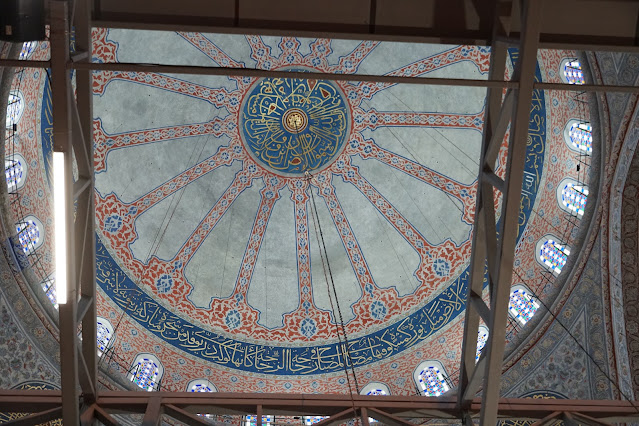








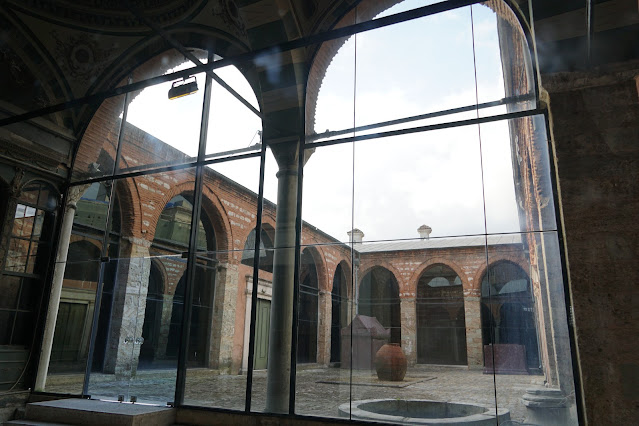












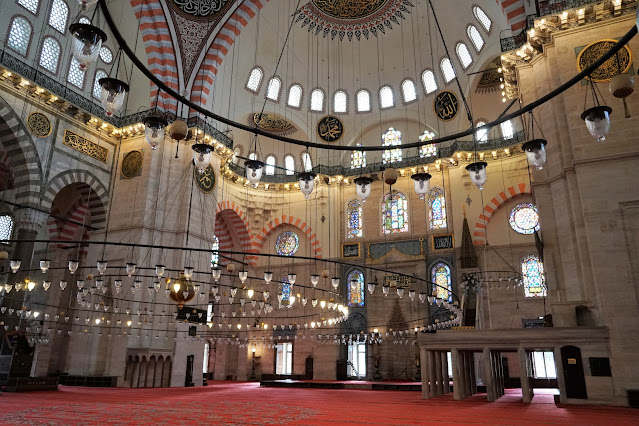





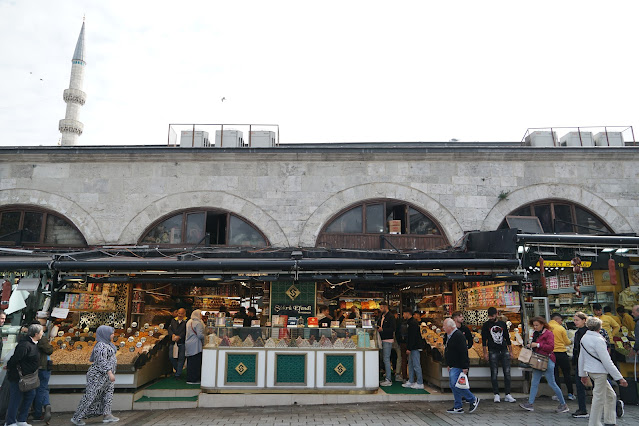



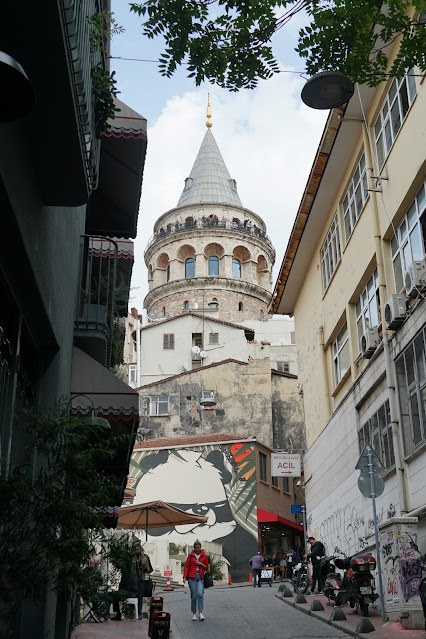



















No comments:
Post a Comment